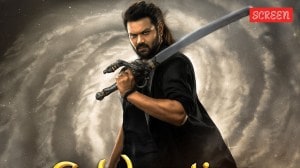Grey shades of black and white
Renowned Mumbai-based artist Riyas Komu and Delhi-based journalist Ullekh NP capture the racial divide that haunted South Africa during the apartheid....
The White Witch
Keith Broad has the arms of a weightlifter. At six feet plus,with his hard-jawed good looks and squat-gymnasium physique,he doesnt look like a 59-year old. Broad was the first white striker to play for a black club in 1979,an action that,according to him,changed the rules of the game.
It was the first step at integration, he says. He had played for Soweto club Orlando Pirates.
Both the blacks and the whites were upset about it,he adds. I received death threats from certain white groups as well as the blacks. He remembers when the opposite team scored a goal in the early first half of the first game he played in Soweto,the crowds started shouting,What is the point of having a white striker? The whole stadium was hostile,he recalls. Then I scored a goal before the end of the first half. I scored two more goals in the second. We won the game.
They gave him a nickname Mthakati,which translates as white witch.
He played for the Pirates for three years and ended up being the top goal scorer. Had there been no apartheid,we would have been the Brazil of the east, says Broad. He vouches that he had the backing of his team-members,though he was under tremendous pressure to score goals from the crowds that was all-black. If you didnt score goals,they would swear at you,ask for Mthakathi to be sent home, he says.
Can you imagine the pressure of having to go to black townships to train every day? I was the only white there and because of all things the white government was doing to blacks then,they used to initially hate me. He is glad that even in gas stations in Johannesburg,people still recognise him. No queue for Mthakathi they say.
Broad,who is into the clothing business now,hangs out at several football grounds in the country,looking for right talent. He says,Talent in South Africa is like gold,but youve got to spot it. He regrets that he wasnt even offered tickets to watch this World Cup though many rugby players of the time are recipients of the government largesse.
Broad,along with Vusi General Lamola who played for the Kaizer Chiefs,and Smiley Moosa,a coloured who played for Pretorias Sundowns,was featured in a recent Australian film The Team that Never Played. This country is going to do very well in the next World Cup, he forecasts .
Segregation on the field
Peter Raath,the greatest chronicler of South African soccer,took us on a football history tour of Cape own-first to what was a white mans stadium,then to a black mans and then a coloureds. In the white mans ground,there were separate galleries for the coloureds and the blacks.
Raath kept reeling out data from nothing more than memory. In 1906,when the white South Africans played white Brazilians,they beat the Latin Americans 6-0. Slaves started playing with their masters in Brazil in the late 1920. In South Africa it never happened. South African soccer suffered a lot due to apartheid, says Raath,the author of Soccer Through the Years: 1862 to 2002 . Raath has an interesting story on Mahatma Gandhi.
Gandhi organised soccer teams at each of the communities which he set up. Games were played at Phoenix in Durban,on the Tolstoy Farm,Johannesburg (which he purchased to maintain families of jailed resistors),and in Pretoria.
Soccer on Robben Island
The guys who played soccer on Robben Island during apartheid form the whos who of the federal government of South Africa. Tabo,the guide who takes us around in the former high-security prison-island,talks like a politician. They played soccer over there, he says pointing to a field. This prison was designed to break the spirits of our leaders.


- 01
- 02
- 03
- 04
- 05





























